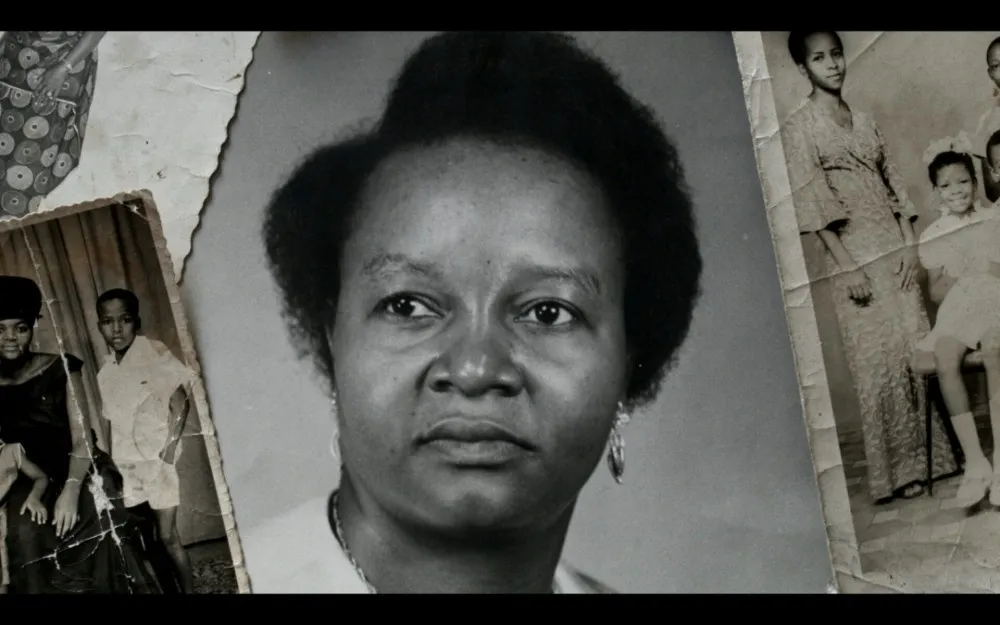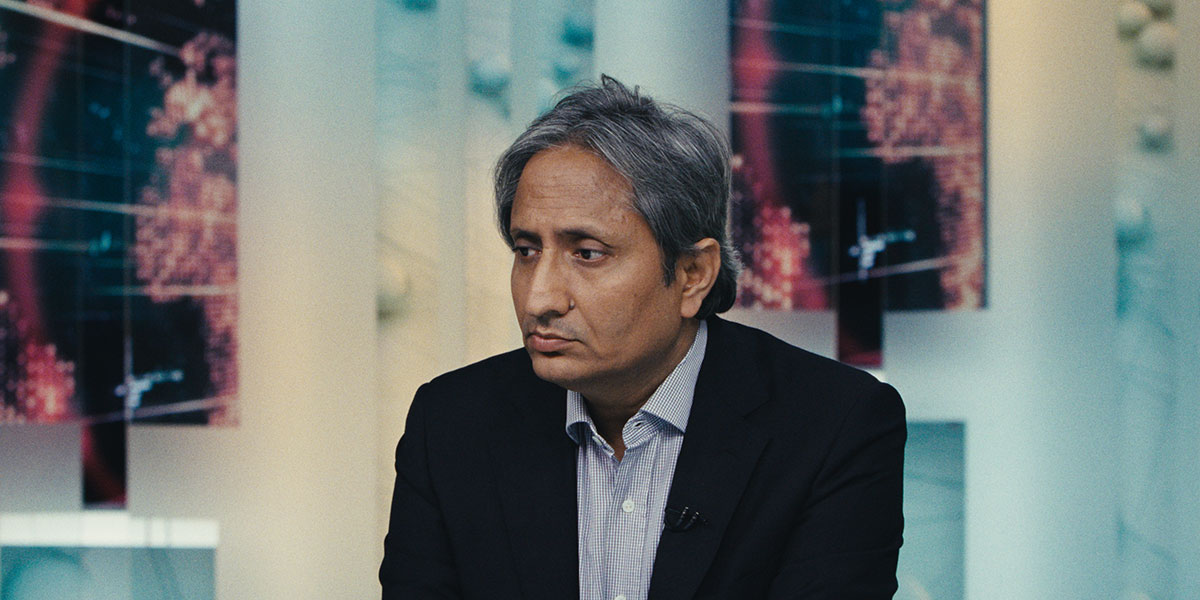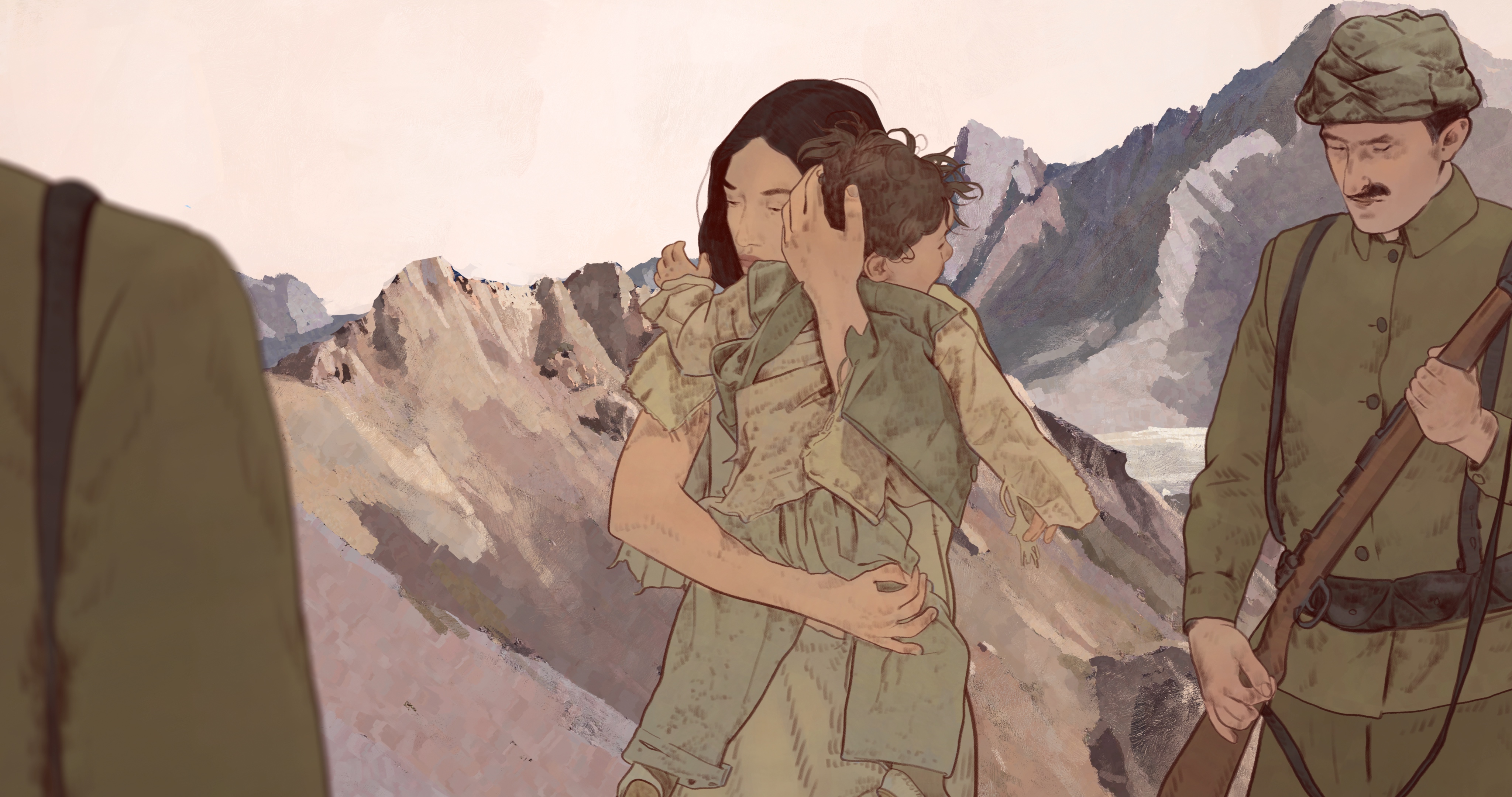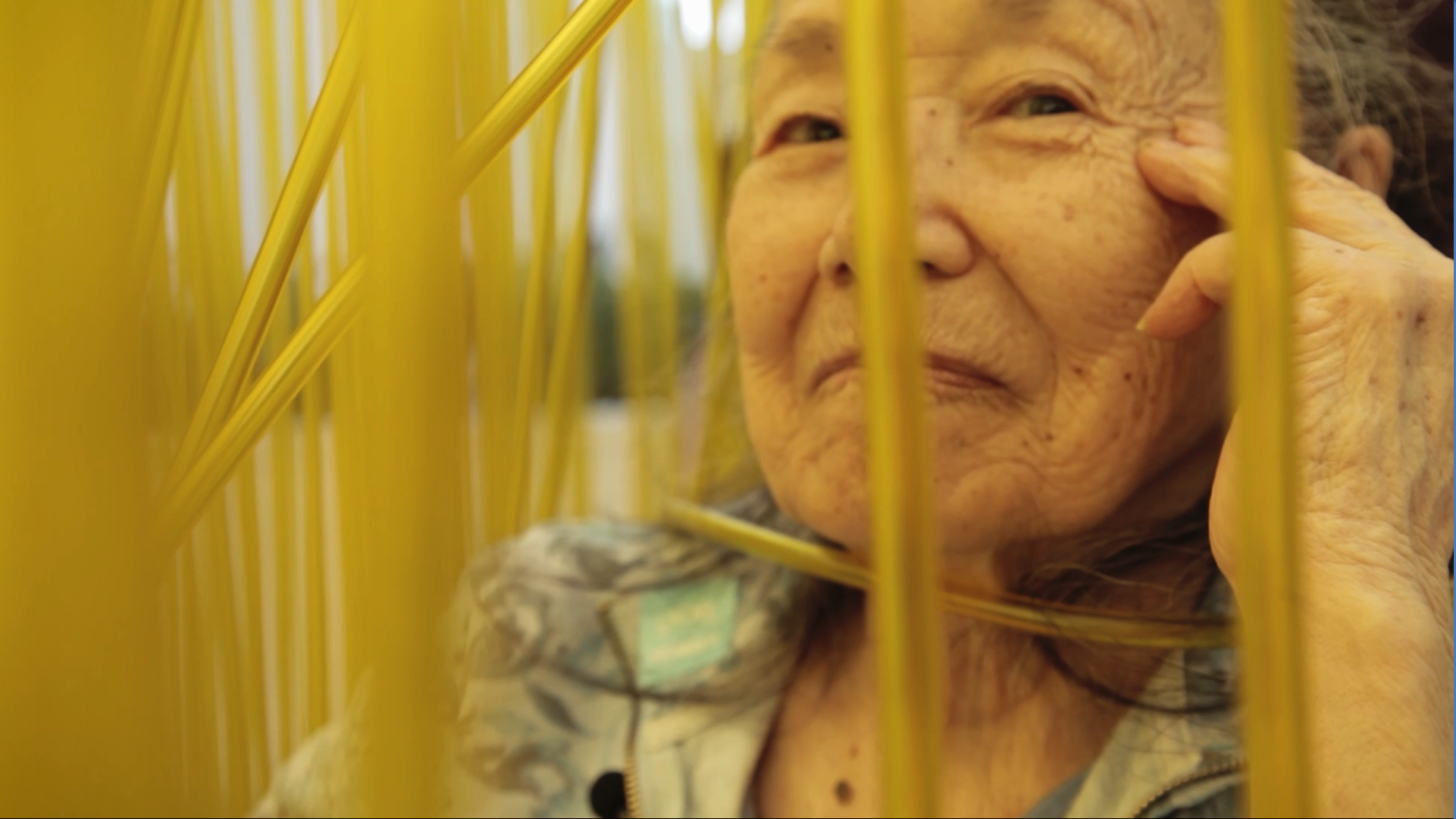

IDFA, the largest documentary film festival in the world, sprawls throughout Amsterdam in mid-November. It’s also an industry mecca, where you might not only attend the high-profile Forum (the grandmother of all pitch forums), but also pop into one room and find aspiring Korean filmmakers doing pitches, turn around and find a group of Palestinian filmmakers doing the same, to their interested funders. Or you might revel in IDFA DocLab, the bleeding-edge, experimental zone of XR/immersive.
Since its origins with founder Ally Derks in 1988, IDFA has proudly celebrated the role of documentary in engaging civic and human rights issues, as well as celebrating the art form itself. With the advent of Syrian filmmaker Orwa Nyrabia as artistic director in 2018, the festival has become even more international and diverse, and has engaged big questions around how to structure a festival that prizes equity, inclusion and diversity. This year, for example, Nyrabia went beyond the usual festival reverence for the individual filmmaker, choosing as IDFA’s book this year Collective Wisdom, a celebration of collective and participatory filmmaking.
And expect more to come: This year, Nyrabia announced that IDFA will be moving into a historic building in the heart of Amsterdam, which will house its many projects and coordinate year-round operations that currently are scattered throughout the city.
He also celebrated the eclectic nature of IDFA’s cornucopia of offerings: “Through the subjectivities of these filmmakers, an image of a world in pain emerges—a humanity that is trying hard, that is vulnerable and sincere, that is complex and persistent. The diversity of artistic forms is astonishing, and there are no boundaries when it comes to tackling the biggest powers or inventing new grammar.”

Eclectic Indeed
Nyrabia did not understate the eclectic curating. The opening night film, All You See, by Netherlands-based Iranian immigrant Niki Padidar, is a film that both experiments with form and addresses the urgent issue of immigration. It is a semi-surreal, interior meditation on the experience of being an immigrant, from the perspectives of five people, including the filmmaker. The film only reluctantly releases any information about any of them, thus challenging the viewer to inhabit the experience of working with partial information that the immigrants have. A theme among all the stories becomes the sense of uprootedness, of not being able to go back, and going forward into a world where they are always different. The film, like the situation it describes, can be awkward, and also hypnotically beautiful, particularly with its slow pans across architectural surfaces that repeat. The overarching theme is long-term, inconsolable loneliness.
The crisply constructed, engrossing and alarming While We Watched has an entirely different goal and style. Vinay Shukla follows embattled Indian TV journalist Ravish Kumar, as his national network news service NDTV is harassed into financial crisis. The authoritarian, Hindu-chauvinist Modi government persecutes media that refuse sycophancy, and many journalists have signed up for the fake-news boosterism that buoys support for Modi’s party. Kumar and NDTV keep their ideals at an unsustainably high price, including both bankruptcy and death threats. I could not look away.
Or you might be captured by the unnaturally calm narration of Money, Freedom: A Story of the CFA Franc, an essay film by Senegalese filmmaker Lena Ndiaye. Using expert interviews and hypnotic b-roll of financial imagery, she shows how the Francophone African currency, the CFA Franc, has been a tool of postcolonial control of African economies—sometimes with the cheerful complicity of corrupt politicians.
You might be tempted to sing along to Bella Ciao, Giulia Giapponesi’s fascinating historical dive into the history of the song that has become an anthem for civil and human rights activists around the world.
And then there was Rea Tajiri’s warmly loving but unsentimental Wisdom Gone Wild, a vérité portrait of a mother who, in her dementia, maintains a sense of humor, a stubborn autonomy, and occasionally a glimpse of who she once was. The complex dynamics of an immigrant family are revealed in the efforts to maintain a relationship with her.

Archival Storytelling
IDFA was rich in creative uses of archival material for storytelling. Each repurposing carries its own set of ethical and narrative challenges.
Alain Kassanda’s Colette et Justin, which recalls his grandparents’ experience of Belgian colonialism and the fight for Congolese independence, powerfully re-employs Belgian colonial footage and photographs for anti-colonial purposes. Inspired by the intellectuals of the Negritude movement (such as Aimé Césaire, David Diop and Frantz Fanon) and by Raoul Peck’s magnificent memory documentary Lumumba: Death of a Prophet, Kassanda wanted to recover history from the colonized’s perspective. His story is not the one Peck tells, but rather a necessary complement to it, and a crucial recovery of long-suppressed history.
But Kassanda lacked materials, even his own family’s memories. He wore down his grandfather Justin and his grandmother Colette with love and snacks, but he couldn’t get around the fact that the colonized had no access to film or photographs at the time. One of his solutions was to use colonial imagery, but superimpose his own narration, making the viewer aware of the positionality of film’s makers. This also permitted him to explore the complexities and ambiguities of the colonial reality; for instance, his grandfather was educated to become part of the African colonial civil service elite supporting the Belgian regime, and the visual record the family has from that time exists only because of that fact. Another was to use atrocity images—those unbearably brutal records of King Leopold’s and Belgian cruelties—sparingly and with explanation. “I had to choose between denial of history and exposing,” he told me. “Many of the kids know nothing of our history, and I had to tell them. At the same time, how would I feel if that was my hanged grandfather in the photograph? My voiceover was making amends to those whose images I used, while I also was creating a testimonial to what happened.”
In Aurora’s Sunrise, one of the most popular films with audiences at IDFA (and Armenia’s submission to the Oscars), Inna Sahakyan faced some similar problems. The largely animated film recovers the story of a young woman who became the face of Armenian genocide for US sympathizers. Millions of Armenians lost their families, lives and homes when, at the tail end of the Ottoman Empire, during World War I, they were relentlessly attacked by the regime. After a series of hair-raising escapes from death and sexual slavery, she ended up in the US and became the heroine of a spectacularly successful Hollywood fundraising film. But like modern-day figures such as Nadia Murad or Malala Yousafzai, she also became an unwilling sacrifice to the altar of nonprofit publicity campaigns.
Sahakyan’s challenge was to tell both Aurora’s story and the story of the genocide. She found in animation a way to develop a narrative from Aurora’s perspective, to openly claim the interpretive realities of history, and to provide a safe distance from the hair-raising brutalities of genocide, which can shock viewers into shutting down. (Among her inspirations were Persepolis, Waltz with Bashir and Flee.) For instance, early on we see the children stage a little play, as was common in the era, for their loving parents. Almost Aurora’s entire family was murdered within two months after the attacks began. As each one dies, rather than see documentary examples of the devastation or an animated version of what happened, we experience that as a revisiting of the play, with one more family member missing,
But Sahakyan also thought it was important for viewers to experience some documentary evidence of the horrors of the event. “I didn’t want to use atrocity photos during the part of the story where the genocide is going on,” she told me. She didn’t want viewers to turn away or gawk voyeuristically. She also had three videotaped interviews with Aurora to work with (each reworked intensively to improve the quality from its original VHS). “But when at the point in the story where she is finally safe in the U.S, I wanted to use them.” An interviewer asks Aurora at one point if she thinks more about the loss of her family or of her people. She responds that the death of her family and of her language and culture are all part of the same terrible loss. “That’s the point where I decided to use the real photographs,” Sahakyan said, “to put the audience into icy water, so to speak, at the point when you’ve almost forgotten what happened, and bring home the reality of it.”
Mila Turajlić’s Non-Aligned is one of several films she has made out of the filmic records of a summit of non-aligned/Third World nations in Yugoslavia in 1961. The great bulk of the film is archival footage, first seen without audio and then with. As narrator, Turajlić relentlessly interrogates the images, exploring the big political gamble that the Yugoslavian leader Josip Bros Tito was making. He used his clout as a successful leader of a nation that avoided affiliation with either the USSR or the US to rally leaders of recently decolonized nations worldwide. In a clever sideways allusion to what he was up against, Turajlić shows us how French and US TV channels repurposed some of the same images to grossly misrepresent the event. For Turajlić, who came of age at the collapse of Yugoslavia and the dream of non-aligned solidarity, there is both nostalgia and sorrow at the death of that dream, as well as admiration for the high-risk strategy.
Manifesto, the top award-winner in the Envision category, is filmmaker Angie Vinchito’s portrait of a tween/teen Russian generation that is both brutally abused and abusing. From its beginnings with students narrating their route to school, to its terrifying ending in domestic terrorism, the film exclusively employs social-media video. It’s difficult to watch both because of the subject matter and because of the jerky, on-the-fly video—and it is profoundly troubling.

Ethics in Action
At a moment when “decolonization” is a buzzword in festivals across Europe, filmmakers at IDFA showed an acute awareness of power and positionality. Legendary filmmaker Laura Poitras, there with her new film, All the Beauty and All the Bloodshed, spent an hour talking with Nyrabia about her ethical throughline, “to expose the myth of American exceptionalism, and to show how power works.”
In Shangri-La, Paradise under Construction, Mirka Duijn, a Dutch-Finnish filmmaker and professor in Sweden, looks at the way in which an Orientalist fiction—the Shangri-La of James Hilton’s popular 1950s novel Lost Horizon, which imagined survivors of a plane wreck in the Himalayas discovering an idyllic forgotten world—becomes a tourist reality in today’s Tibet. What could easily have been an arch and superficial take on Chinese megaprojects becomes instead a thoughtful exploration of the construction of culture, from a variety of perspectives.
Her first ethical problem was, she told me, “Who am I to go to Tibet and ask for a story? I didn’t want to shy away from my position as a Western privileged person, so I thought that I must problematize my own position. It’s not that I as a white person should never make that film, but it’s about how I do it.”
Duijn begins with recalling her childhood drenched in fascination with an Oriental other, and then charts a course to look beyond stereotype to the act of mythmaking itself. She looks back at the popular Western culture generated by Lost Horizon, including faddy hairstyles. She talks with Tibetans about their recovery of airplane parts from the mountain tops (where many planes were downed during World War II). She chronicles the creation of new “traditional dances” for Tibetans to perform for tourists to the brand-new “ancient city” of Shangri-La. Employing the evidence from 40 different filmic sources, interviews and documents, she excavates stories that people differently make, from their own social positions, with bits of data. Each forms a piece of a historical puzzle that never quite fits together. A pattern emerges: Orientalism not only runs West to East, but also Chinese to Tibet. The result is a film that richly explores the creation of meaning from different perspectives that infuse the project of “paradise under construction,” and leaves viewers with hard questions to ask themselves about exoticization and power.
One of Duijn’s ethical challenges was in interviewing Tibetans, who live cautiously under Chinese rule. (She had enthusiastic permission from the Chinese authorities, who hoped for a marketing boost.) Duijn did not want them to get into any trouble, and so avoided conversations that could result in negative comments. In the end, though, the Tibetans were eager to sell her on the project, which is also creating opportunities for them. And that didn’t keep Duijn from having her own perspective on Shangri-La.
Julia Jaki, the maker of Dorpie, about one woman’s struggle to create safety for South African women suffering abuse, is a journalist who has lived in South Africa for the last decade. Powerfully moved by the story of the activist’s work, and angry at the sensationalist coverage of sexual abuse of women, she wanted to tell the story. But she proceeded only when the activist encouraged her to do so, and she worked closely with a South African creative team. The activist worked closely with the team near the end of the edits, to ensure that faces of vulnerable women were appropriately blurred, and that some scenes were edited to protect them.
For the makers of Blue ID, the winner of IDFA’s Audience Award, ongoing consent was central to managing the ethical challenges of making a film about a Turkish TV soap opera actress, who had identified as lesbian, going through gender transition to become a man, Rüzgar. The engrossing film follows Rüzgar from the first testosterone shot through years of evolving a different personal and public presence. The filmmakers offer an intimacy and vulnerability that is almost startling.
The filmmakers had known Rüzgar for more than a decade, as part of their LGBTQ+ friendship network. Their friend asked them to follow the transition process, primarily to help others who did not have their privilege. It wasn’t until he was outed that they committed to make a film, since the process was now public in any case. “We felt that now we needed to make the film, so somebody feels shame for the harassment he went through,” said co-director Burcu Melekoglu.
The filmmakers refused co-production opportunities and hired only crew that Rüzgar would be comfortable with. At every step, they sought his consent to proceed, and they showed him the complete fine cut before releasing. “We were ready to not premiere it if he didn’t like it,” co-director Vuslat Karan said. They hesitated to quote the anti-LGBTQ+ media-baiting that he experienced, until he begged them to include it, in order to show what he had suffered. Even so, they limited that use, because of concerns that it could be triggering to others.
The Anti-Meta Metaverse
The immersive and XR showcases at IDFA DocLab, superbly curated by Caspar Sonnen and a crack team, as usual took our imaginations around the next corner. The twin problems of limited access and tech glitches were, as always, baseline to the experience, and remain monumental obstacles to wider use. But artists refuse to let that stop them.
In a widely varied landscape of VR, my personal favorite was Plastisapiens, which won a Special Jury Award for Creative Technology. Supported by the National Film Board of Canada, the work was created by Miri Chekhanovich and Edith Jorisch. The VR piece addresses the prevalence of microplastics in our environments, including our bodies. It takes us on a telescoped journey from the formation of life on earth to the evolution of a plasticized new reality; our moment in evolution is but a stop on this fantastic journey, which, the artists suggest, will happily continue without us. The concept, message and experience were so elegantly melded that I didn’t even want to take the headset off. That never happens to me.
Some of the treasures were delightfully low-tech and accessible. His Name Is My Name, by Eline Jongsma and Kel O’Neill, which also won a Special Jury Award for Creative Technology can be watched on Instagram, or if (like me) you are Zuck-aversive, on Vimeo. It’s an eight-episode story, with simple but elegant animations, about Jongsma’s monster of a grandfather, who was a zealous pro-Nazi official. The piece asks us to consider how to incorporate this knowledge into one’s own story.
Other ethical questions also came up for interactive and immersive artists. Tessa Ratuszynsk, who created the VR work With These Hands, about surviving sexual violence, developed a new process for obtaining survivors’ consent, after consulting academic ethics boards (IRBs). She rejected release forms as merely protecting filmmakers and institutions, not participants. She and participants collaboratively edited the consent forms with people in the projects, and revisited them while making the work, so that consent became an iterative process. Atlantic Studios’ Raul Balai is exploring decolonization by pairing artists from ex-Dutch colonies in the Caribbean with XR experts, to use the National Archives’ digitized records from the West India Company for new critical work.
The DocLab summit included, among many other things, projects that address the lack of showcases for XR work, and the lack of archiving. The company Nu: reality is launching VR in three European cinemas next year. Sandman Studios is experimenting with developing better storage techniques and creating purpose-built spaces for XR.
Patricia Aufderheide is a professor at the American University School of Communication in Washington, D.C.




